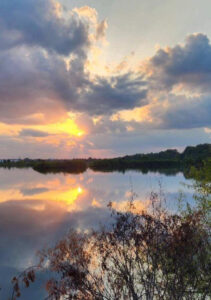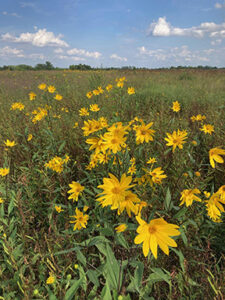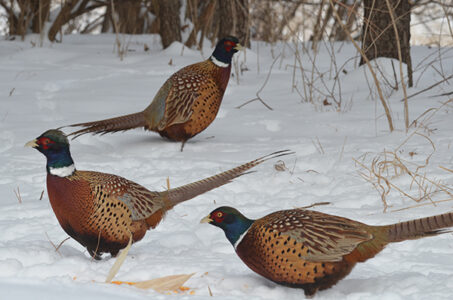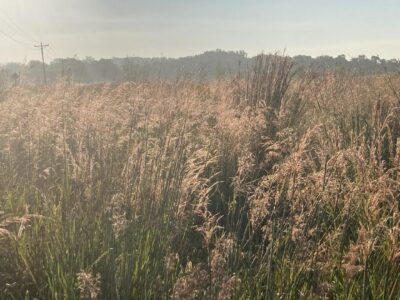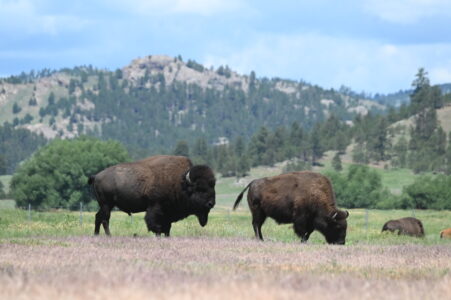Nature’s paint brush images – free
GREAT IMAGE opportunities sometimes fall into your lap. They seem to shout “here I am” and wait for you to admire those special moments, with your eye, or your cell phone camera or a higher end 35 mm camera.
No matter how that mixture of the subject and lighting came to be, you were there to see it, admire it and hopefully record it. Nature offers many special moments like this.
Soon, by mid-October, tree leaf color will peak as shorter day lengths impede the ability of leaves to make chlorophyll. The result will be tree leaves transforming into tan, browns, red, yellow or gold colors.
Our eyes will see these art works, temporary as they are, and admire them profusely. The price? Free.
Occasionally while watching an episode of Antiques Roadshow on public television, a featured story will be of an artist’s painting of an outdoor scene. It will be well done for sure, perhaps even framed to make it stand out so as to be able to have it hang on someone’s display wall. The artist will have signed it, of course.
The current owner may know something about its history or nothing at all. Regardless, the painting was admired enough by the owner to purchase it long ago.
Then a bit of description is offered by the “expert” who comments on the collectability of this artwork, outlines details about the artist who painted it, and maybe even the rarity of the work. Soon the question gets asked about its value. For we the viewers of the TV show, we can already assume that because it has drawn enough interest by the “experts” to feature it, that the painting may come with a high monetary value.
A casual reply will state something like this: at the right auction in a correct gallery market offering, this painting is worth some large sum of money with lots of zeros after the first figure. Of course, the owner is surprised and grateful.
I hope to contrast the above scenario with the images in today’s edition of Outdoors Today. Several observations immediately come to mind.
Although we can and do appreciate good artwork for any multitude of personal reasons, sometimes the cost is just too much. We have to justify in our own mind if the item is worth the money we contemplate spending. We do recognize and appreciate that someone else has taken their time to represent an outdoor setting of great merit, composed the subject well and made a collectible piece of art work. That artwork may instill memories of times past when we witnessed a similar place and time, but did not record it with our own paint brush or camera.
Mother Nature offers her best at any place and time — for free. Well, free is a relative term. You and I do have to expend the effort to be at a special location in the first place, at the right time and be lucky enough to do so with the right lighting. When all these elements come together, and our eyes see the moment as special and unique, it is time to “smell the roses” and record with our devices a free offering of artwork.
My thoughts about the exciting opportunities offered by any outdoor experience are simple. Make the effort. Go outside to create an adventure. Hike along a trail in a county or state park. Admire the trees or grasses for what they are where they are.
Find quiet moments while walking through the tall prairie grasses and flowers at the Marietta Sand Prairie. Learn to see the beauty and uniqueness of a wetland or marsh.
Enjoy other moments of solitude and inspiration at a place like Sand Lake when the sunset is grand and the water is calm. Let Mother Nature paint her prize winning moments for you — free.
———-
The new prairie grasses and forbs that have emerged at the Mann Wetland Area south of Albion and across the highway from Timmons Grove (north) are superbly showing their best. This reconstruction of prairie and wetland loving plants is getting off to a great start.
Two years ago, the seeding was accomplished in the late fall/early winter by a cooperative venture with the Marshall County Conservation Board and the U. S. Fish and Wildlife Service. Seed sources had been obtained to have a wide diversity of grass species plus a fantastic array of other unique wetland plant types. Those seeds were spread across the land surface and allowed to filter onto the soil surface by natural processes so that stratification could take place (frost freeze and thaw action on seed hulls).
When warmer spring weather returned, those seeds were ready to germinate. Along with the native plants that the conservationists wanted to grow came a host of undesired plants, some of which were true weeds.
At first, the weeds wanted and did try to dominate, growing tall and fast to feast on sunshine. Management of the site entailed mowing off the weeds and other fast growing plants with several objectives.
First was to eliminate the weeds from going to seed by cutting them off. Secondly, by mowing the area, a critical component was able to function.
That component was sunlight, a vital factor for new emerging prairie plants. These plants thrive on sunshine.
Looking at the status of the vegetation now dominating at the Mann Wetland, it is obvious that success is well on its way. Big bluestem and Indiangrasses are creating a tall and interesting mosaic texture to this wide expanse of land. Lower to the ground are over 200 other species of native plants or forbs finding the correct setting to grow.
Over time and with careful specific management by mowing and controlled burning, the diversity of the area’s vegetation will prosper. Wildlife of all kinds will utilize this new habitat, especially ground nesting birds. The wetland marsh with its cattails and open water segments will
host migrating birds each fall and spring.
———-
BIRDS migrating south have been doing their thing. Some species have already moved through being known as early travelers. Others will follow later this month and into October.
One interesting way of trying to identify or at least listen for birds on the move is via a cellphone app called Merlin. Merlin is its name, and is a product of sounds made by birds coupled with photos.
The Macaulay Library of the Cornell Lab of Ornithology has a deep learning program of millions of bird sounds, calls and photos. All of this data is meshed into your smart phone app titled Merlin. By listening for bird calls, your device will display a photo of the bird after it has listened and identified the species.
I have installed this app on my cellphone. It is interesting that many times my phone will hear a bird species that I do not see personally, but is close enough to have listened for the tweets, chirps, whistles or songs.
A display photo pops up and I can check on a short summary to read more about the feathered critter. This phone app is free. Of course, if you wish to support the Merlin program with a donation, they will take your money for a good cause.
My Merlin app has recorded many typical birds that may visit my backyard feeder station. Some unique species since Sept. 1 include Tennessee Warbler, Red-eyed Vireo, American Redstart, Dickcissel, Black-throated Green Warbler, Blue-gray Gnatcatcher, Eastern Wood-Pewee, and Least Flycatcher.
I have noted that about 20 to 25 species can be identified by the phone app in a one hour listening session. This includes all the common species in addition to those less common types that are just moving through.
The Merlin app can get expert tips, range maps and photos as well as sounds. You can make a customized bird list. It is designed by experts to be accessible to anyone.
Merlin can be a global bird-look up for any bird any place and track your sighting on ebird. The Cornell Lab of Ornithology aims to make bird related discoveries easier for you and millions of people.
———-
Garry Brandenburg is the retired director of the Marshall County Conservation Board. He is a graduate of Iowa State University with a BS degree in Fish & Wildlife Biology.
- PHOTOS BY GARRY BRANDENBURG — Nature paints pretty pictures if you are at the right place at the right time. Recording these instances of time with your cell phone is an excellent method of preserving each unique special moment. Then sharing those moments brings additional enjoyment to all who view your special capture. Today’s images are another excellent example of right time/right place scenarios. Fellow friend Ed Moore went fishing last week at Sand Lake. The air was calm and the clouds created scattered light rays from a setting sun, all reflected in mirror smooth water. Thanks Ed for this inspiring moment of nature showing her best. The flowers at Marietta Sand Prairie greeted me a few days ago when I stopped by to explore the native grassland. Those bright yellow blossoms gently waved in the breeze and brought a smile to my face. Thanks Mother Nature for your inspiration.

